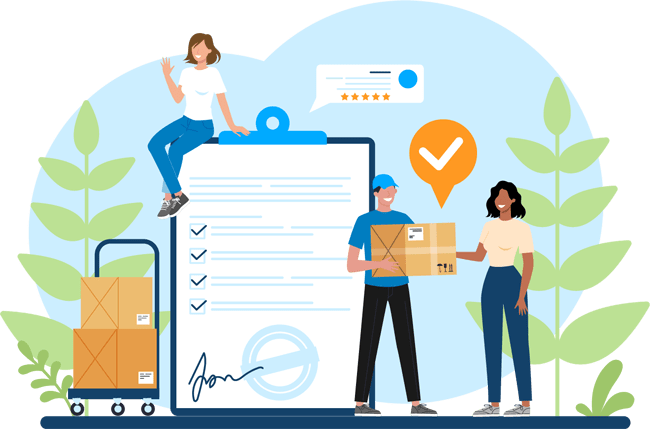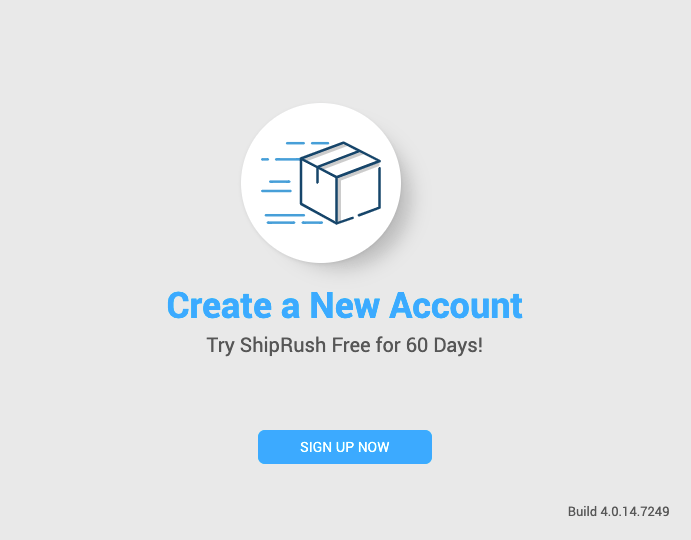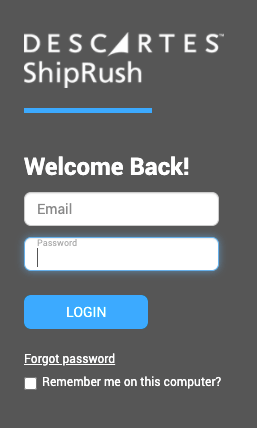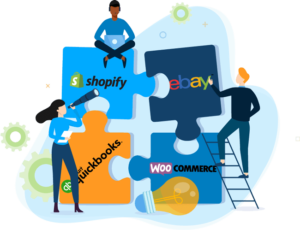
Why are customers leaving my ecommerce business?
More than four out of five people ages 18-25 have had a delivery problem in the last three months…21% [of them] did not order from the retailer again (Descartes Systems Group, Inc. 2023).
Often ecommerce business leaders struggle to understand customer behavior. Because ecommerce is largely self-serve, you may never see nor talk to your customers. However, they are the lifeblood of your business, and their buying behavior makes or breaks your success.
For this reason, Descartes conducts an annual ecommerce consumer sentiment study. We ask ecommerce customers worldwide to provide feedback on what matters most when it comes to ecommerce order delivery. Then, our ecommerce experts analyze the survey results to uncover customer needs that often go unspoken.
The hidden danger of delivery problems: ecommerce churn.
As much as we would like to believe that people are patient and forgiving, ecommerce businesses often experience punishing behaviors from unhappy customers. Depending on the personality of the offended person and the extent of their delivery problem, they may retaliate, and not always in ways that you can see.
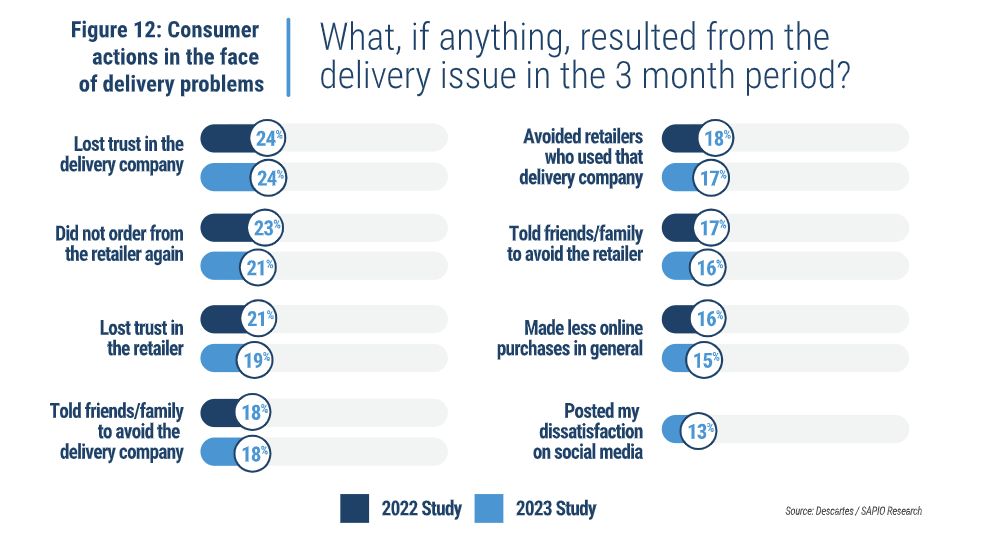
One of the most common responses to delivery problems is silent ecommerce churn: your customer quietly takes their business elsewhere. Because you are unaware of the problem, you have no chance to make things right. This may not seem like a big deal, but consider the cost of acquiring a new customer:
Total Sales and Marketing Expenses / Total Number of New Customers = Cost of Acquisition per Customer (CAC)
Every time you lose a customer, you must pay to acquire a new one. This erodes your bottom line and prevents your business from achieving profitability. How much money are you losing? Look at your customer lifetime value:
Average Order Value X Average Number of Orders per Customer = Customer Lifetime Value (CLV)
Cost of acquisition takes a cut out of your first sale to each new customer. The average CAC for ecommerce retail/consumer goods is $10-22 per customer (Rathi, 2022). Subtract it from the CLV, and you will see your profit potential. How much profit are you throwing away in customer churn?
Ecommerce delivery problems damage trust.
Consumers claim that delivery problems impact their feelings and behavior toward ecommerce businesses, just like last year’s study indicated. Amongst those who experienced delivery issues, 24% of respondents say they have lost trust in a delivery company, while 21% did not order from the retailer again (Descartes Systems Group, Inc. 2023).
Think about this: every time a customer orders from your website, they exercise trust. The level of risk varies according to your brand reputation, so a higher level of trust is required when purchasing from a new brand without much social proof. Your business must be intently focused on building and maintaining consumer trust.
How can I stop customers from leaving my ecommerce business?

Understand the key delivery problems driving dissatisfaction.
Top Three Delivery Problems for Ecommerce Customers
- 23% of consumers experienced delivery that was much later than expected.
- 22% of consumers experienced delivery at a different time than expected.
- 18% of consumers said the delivery time offered was longer than they were happy with.
Descartes Systems Group, Inc. 2023
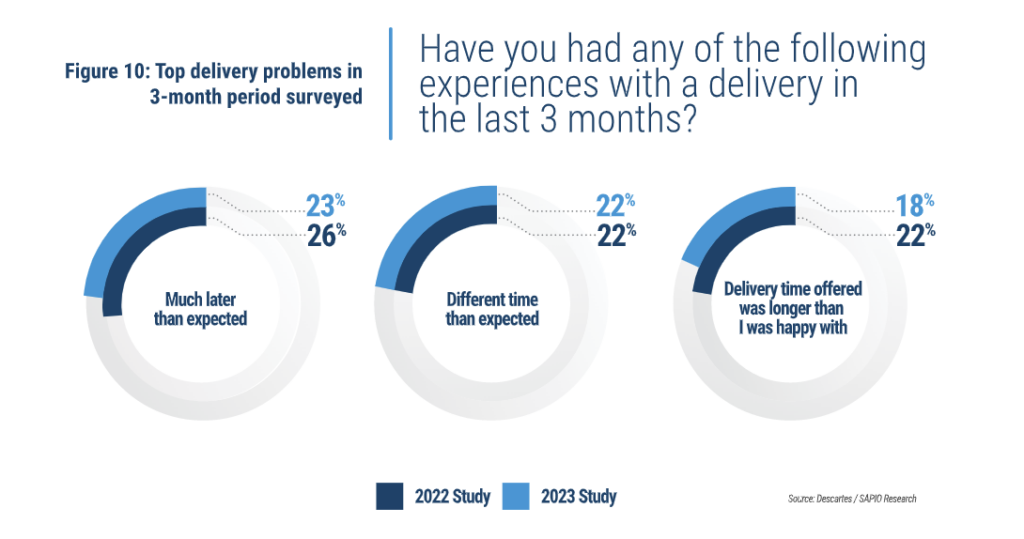
These problems all share a common factor: timeliness of delivery. Many people juggle busy schedules and are often away from home. To compete with brick-and-mortar locations, prevent package theft, and ensure people are home to receive their packages, home deliveries must arrive when they’re supposed to. Now, how do we do that?
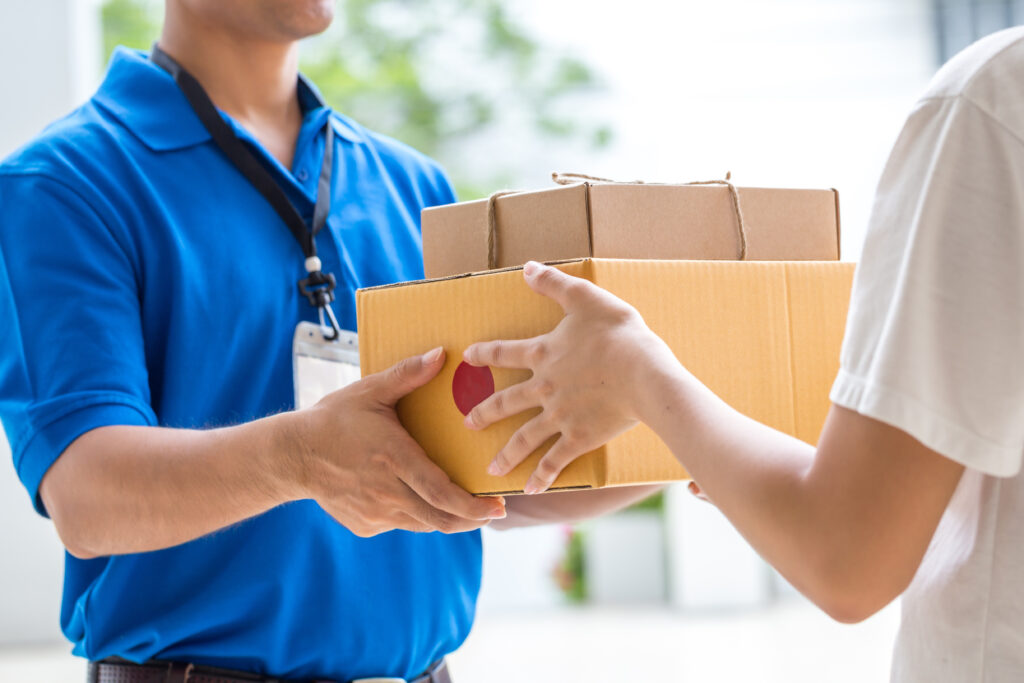
Consistently provide timely delivery experiences.
Here are a few tricks to help you consistently provide timely delivery to your customers. We recommend you pick one focus area to start, then gradually add more strategies over time.
1. How to keep orders from arriving later than expected:
Take steps to improve fulfillment processes and get orders out the door faster. By preventing bottlenecks within your operation and processing orders quickly, you will create an extra cushion of time to compensate for any delays on the carrier side.
- Eliminate double data entry. If you aren’t already using shipping software for this, it’s time to start. Integrating all your shops, marketplaces, and carriers in one program will save you time. No more typing addresses into carrier websites, no more keyed entry errors, and you can print labels in seconds.
- Auto-prioritize orders. Orders don’t always have to be internally processed (fulfilled) in the same order you received them. It’s much faster to process similar orders together, and automatic order prioritization via technology can efficiently organize and prioritize hundreds or thousands of orders to prevent late deliveries.
- Reduce picking time. By using warehouse management software, you can eliminate paper pick lists, “treasure hunts,” and the amount of walking time workers take. This results in faster order fulfillment.
2. How to deal with deliveries arriving at a different time than expected:
Many consumers rely on precise delivery to prevent package theft. Unpredictable deliveries damage customer trust and increase anxiety and frustration. What can your ecommerce business do to improve the customer experience?
- Include a “precise delivery” shipping option. Use highly reputable carriers for this, even if they cost more. Customers who need precise delivery will be willing to pay extra for it.
- Improve customer communication. Let customers know what to expect when the delivery time changes. Provide a branded tracking page where customers can check on deliveries and send branded emails regarding delays.
3. How to meet fast delivery expectations for ecommerce customers:
Some customers want fast delivery, period. Expectations for two-day shipping remain a persistent problem because of companies like Amazon. How can your ecommerce business shorten fulfillment time and provide the fastest shipping?
- Offer a “fastest shipping” option. It’s okay if this option costs more because many consumers who want the fastest shipping will pay extra to get their order sooner.
- Save on fast shipping. Faster shipping is often more expensive, so protect your profit margin with discounted shipping rates. Shipping software companies negotiate discounted rates with carriers and pass the savings to you whenever you ship using their software.
- Automatically use the fastest carrier. Easily compare carrier delivery speed with shipping software that integrates all your carrier accounts in one place. Set automation to select the fastest shipping for orders that require it.
Ensure customer satisfaction with home delivery.
Profitability depends on repeat business. It’s worth the investment to prevent delivery problems and keep your ecommerce customers happy. Are you ready to take the first step?
References
The Descartes Systems Group, Inc. (2023, March). Dear Consumer: How Do You Feel About Home Delivery Now? Waterloo.
Rathi, R. (2022, February 2). Customer acquisition cost by industry: CAC Benchmarks. StartupTalky. Retrieved April 12, 2023, from https://startuptalky.com/cac-by-industry/#Customer_Acquisition_Costs_by_Industry

